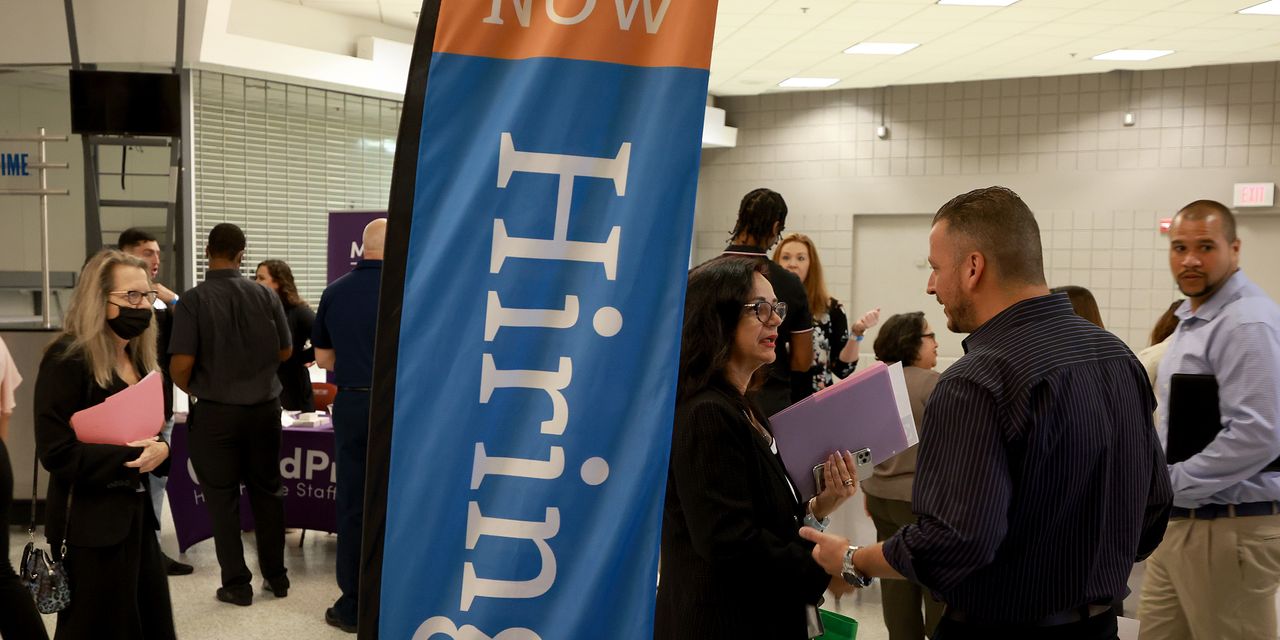The June jobs report on Friday showed the U.S. economy gained 209,000 jobs last month, with the unemployment rate dipping to 3.6% from 3.7%.
Economists polled by The Wall Street Journal had expected an addition of 240,000 jobs and an unemployment rate of 3.6%.
See: Jobs report shows 209,000 gain in June — smallest increase since end of 2020
Below are some initial reactions from economists and other analysts, including their views on what the jobs report means for the Federal Reserve as the central bank considers how to proceed with interest-rate hikes. The main U.S. stock indexes
SPX,
DJIA,
COMP,
traded mixed following the data on nonfarm payrolls, also called NFP.
• “This is actually a great number. This is a number that is something we can sustain. We can’t sustain adding 300,000, 400,000, 500,000 jobs a month. We need to see it slow. It’s doing exactly what it needs. If we’re going to have a soft landing, this is what it looks like. So I don’t think that we should make too much of this number being bad. But I do think that the Fed train is rolling toward another rate hike, but I wouldn’t put my money on a second one yet.” — Betsey Stevenson, economics professor at the University of Michigan and a former Obama White House economist, in a CNBC interview
Related: July Fed rate hike remains largely priced in, expectations for September or November hike soften somewhat
• “In a sense, this is the best possible jobs report, then, threading the needle between too strong and too weak. People should be happy to see decent job growth and decent wage growth. The Fed can take pleasure in slowing momentum and wage growth stabilizing rather than rising, while bond traders can breathe a sigh of relief there is no sign of the strength picked up by ADP yesterday. It is win, win, win.” — Chris Low, chief economist at FHN Financial, in a note
• “The 209,000 rise in non-farm payrolls in June was the weakest gain since December 2020 and suggests labor market conditions are finally beginning to ease more markedly. That said, it is unlikely to stop the Fed from hiking rates again later this month, particularly when the downward trend in wage growth appears to be stalling.” — Andrew Hunter, deputy chief U.S. economist at Capital Economics, in a note
• “Overall, the cooling in hiring is a welcome development, but the pace is still above growth in the working-age population, and combined with continued wage pressures and the drop in the unemployment rate, this leaves the Fed on track to hike rates by 25 [basis points] in both July and September.” — Katherine Judge, senior economist at CIBC, in a note
• “Black unemployment went up to 6.0% for June, and is a statistically significant change from 5.0% in March. So while the employment rate is historically high, there is still room for growth. (As always when we’re talking about historical exclusion & discrimination).” — Kate Bahn, economist and research director at WorkRise, which is affiliated with the Urban Institute, in a tweet
• “The markets maybe made too much of the ADP number, as that has shown to be not always exactly a great indicator. … The labor market is cooling, but marginally. Most importantly, though, the average hourly earnings number suggests still some firming in that space, and that’s where the Fed has been primarily focused. So for me, this is maybe a little lighter, but not a dramatic change in terms outlook and expectations.” — Roger Ferguson, former Fed vice chair, in a CNBC interview
Now read: Part-time work surged in June as hours cut back, U.S. jobs report says
Read the full article here





